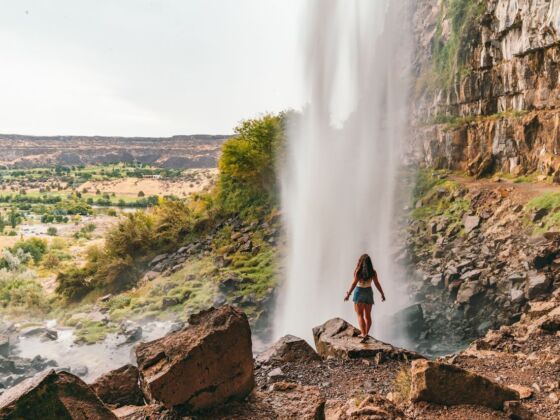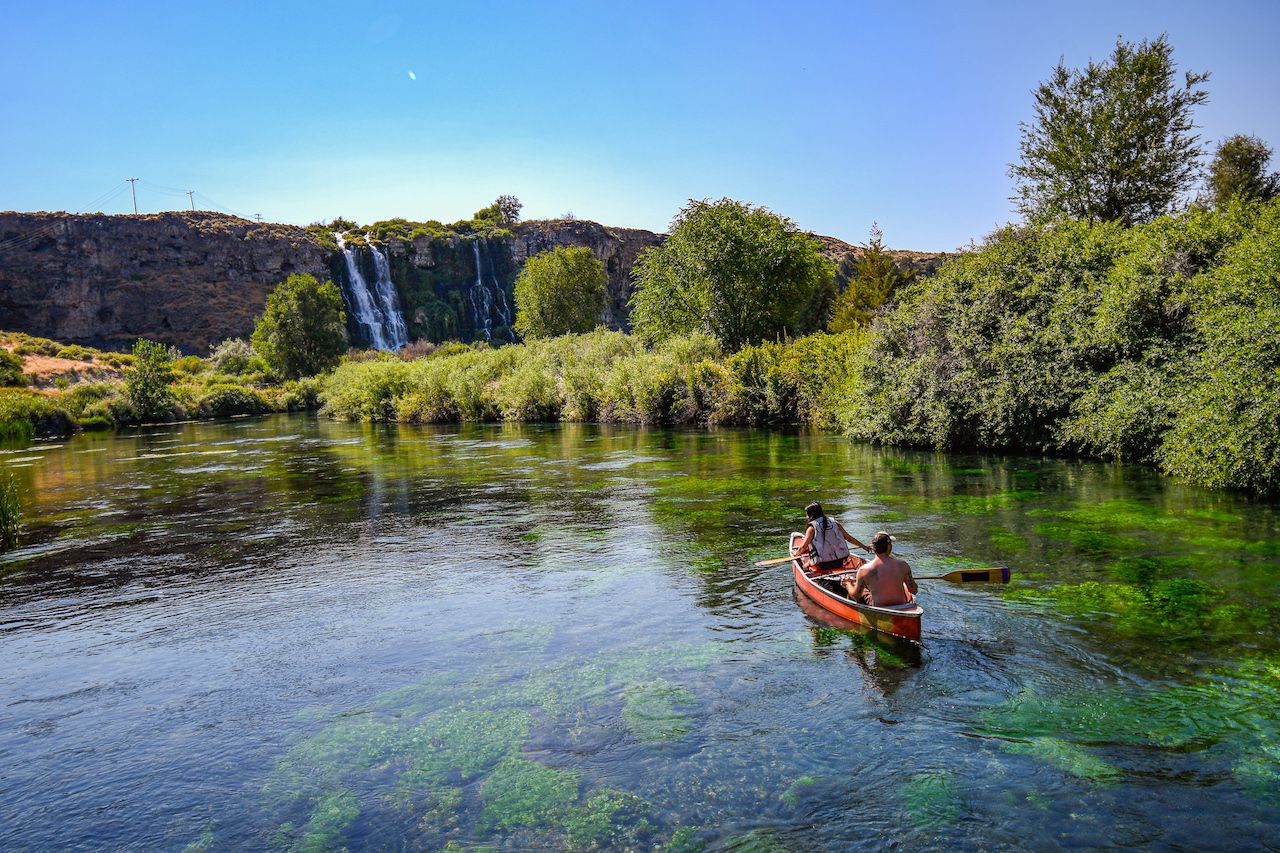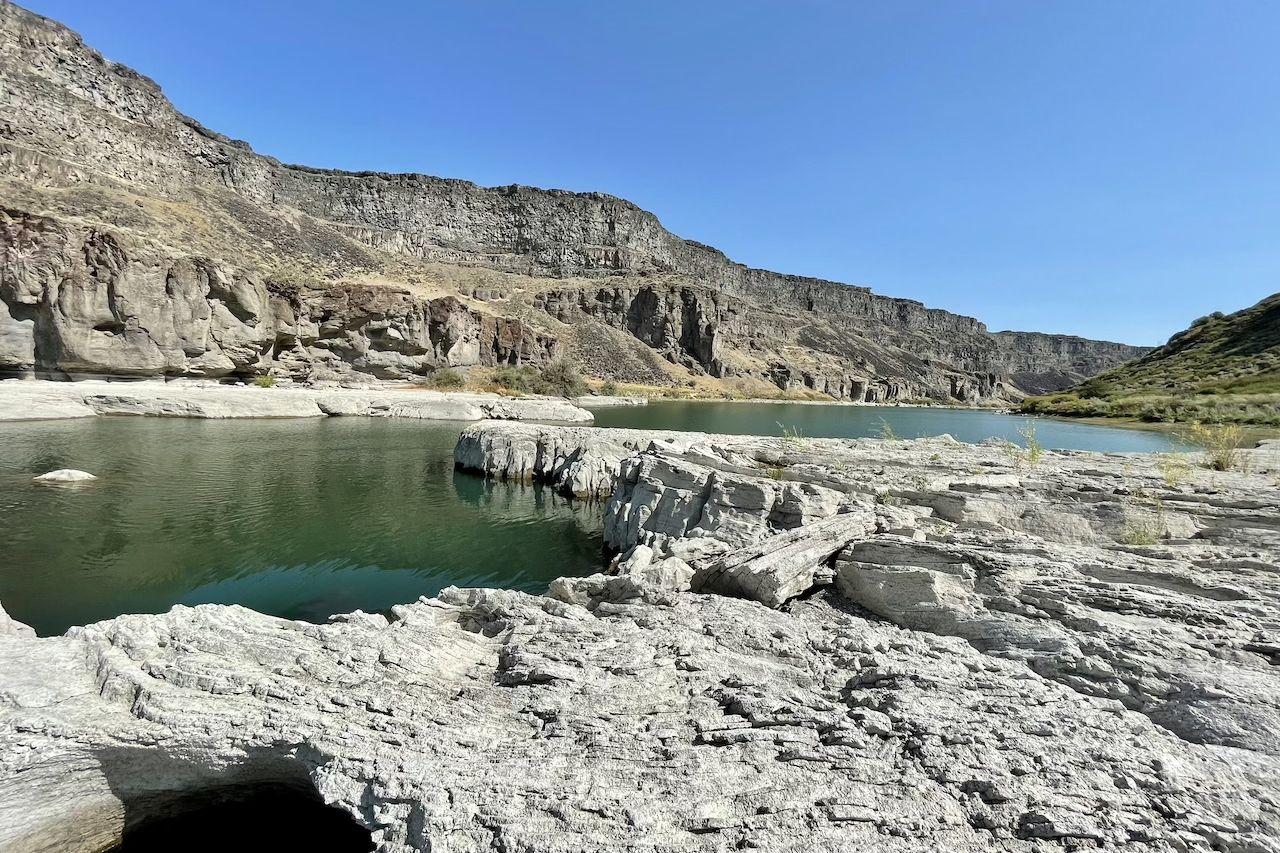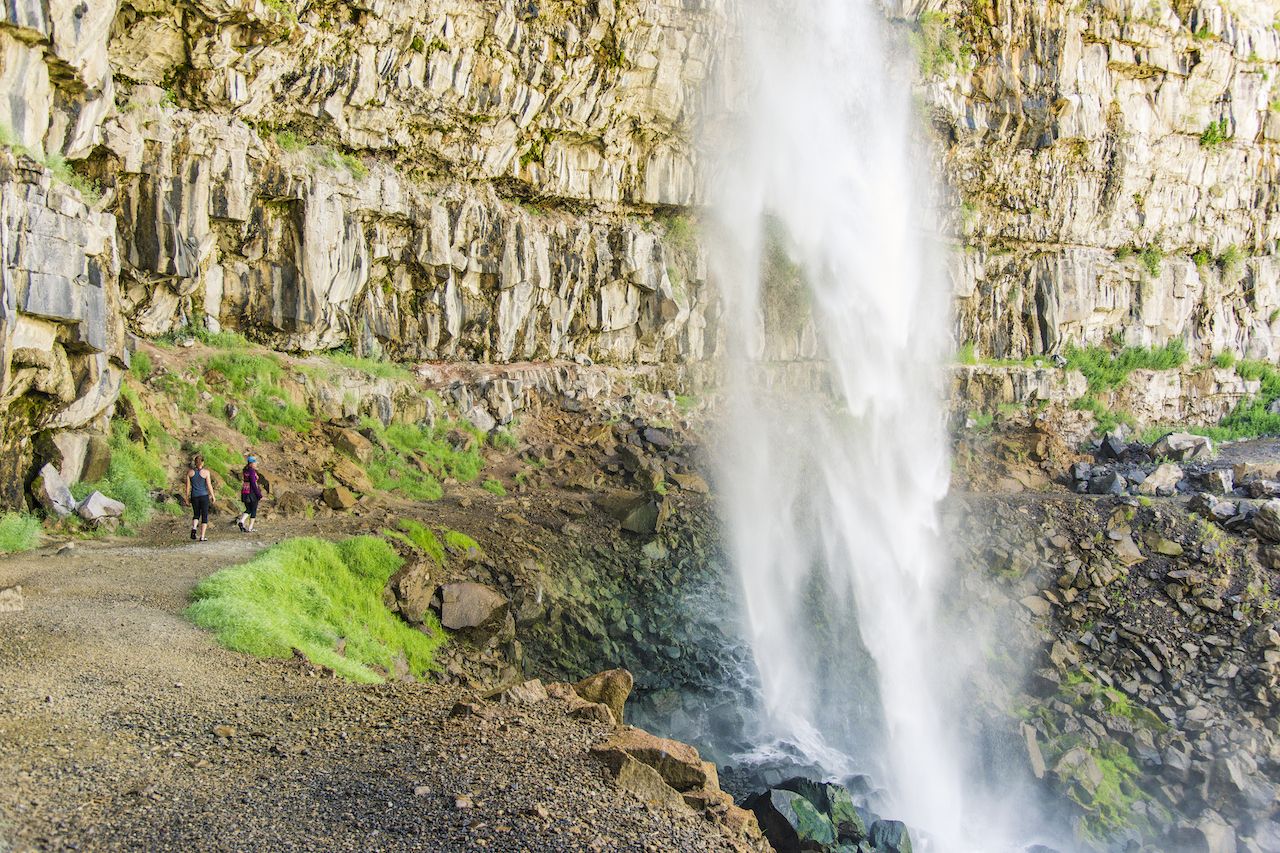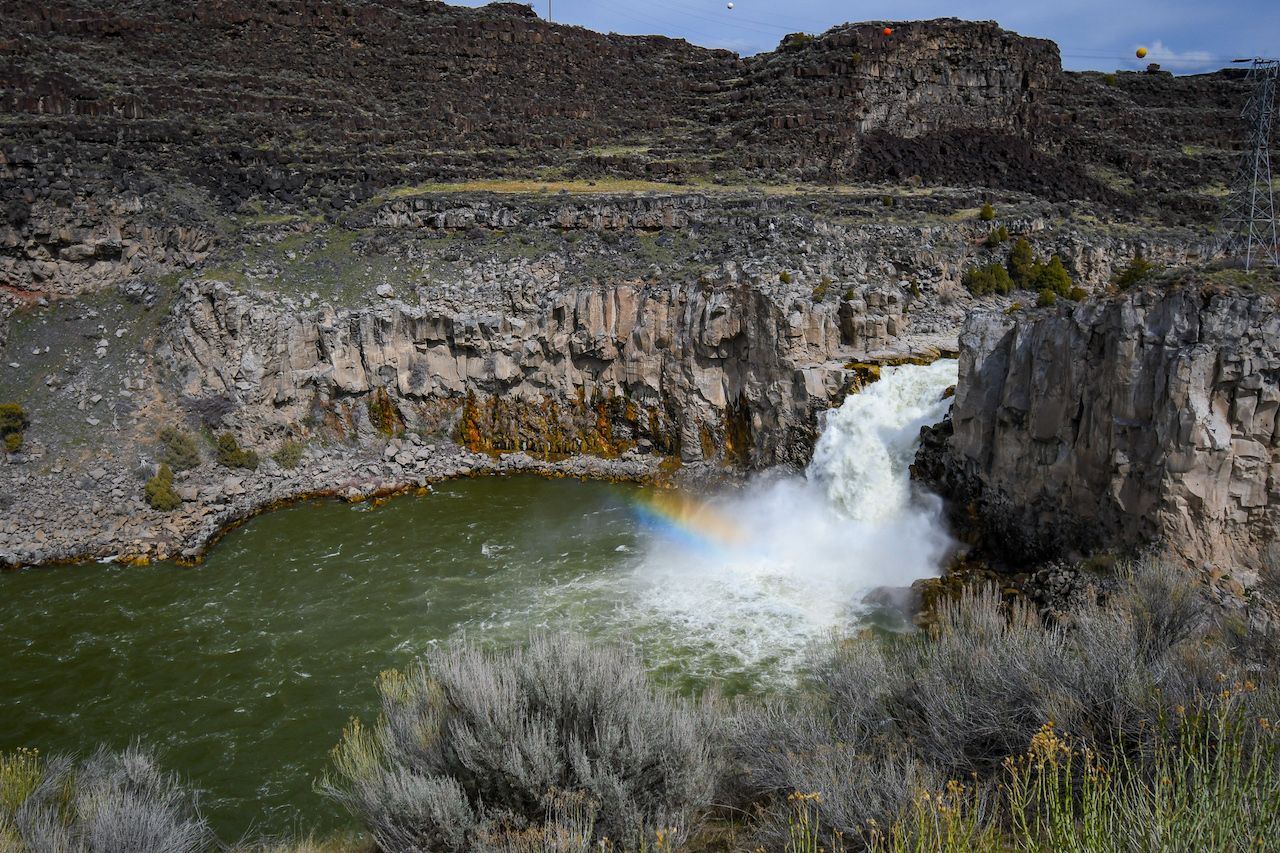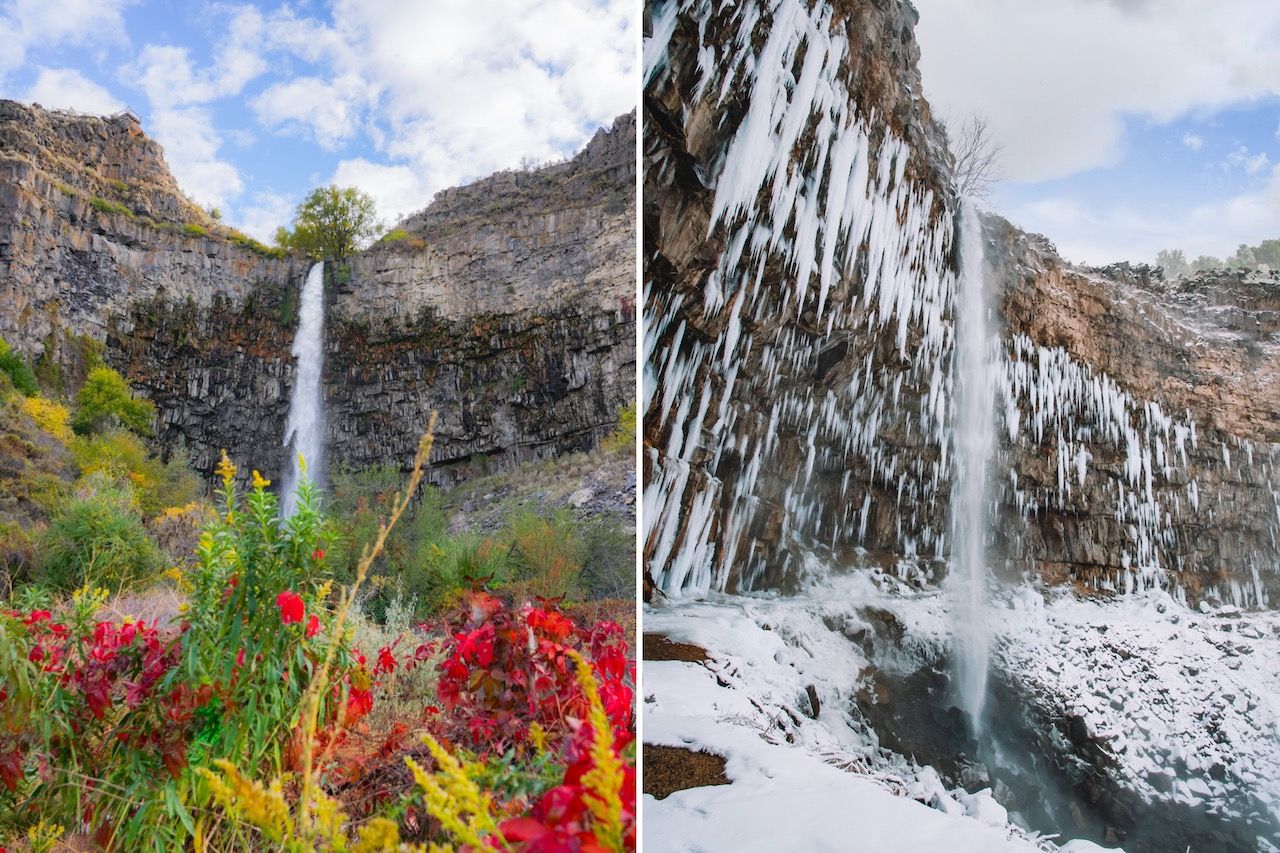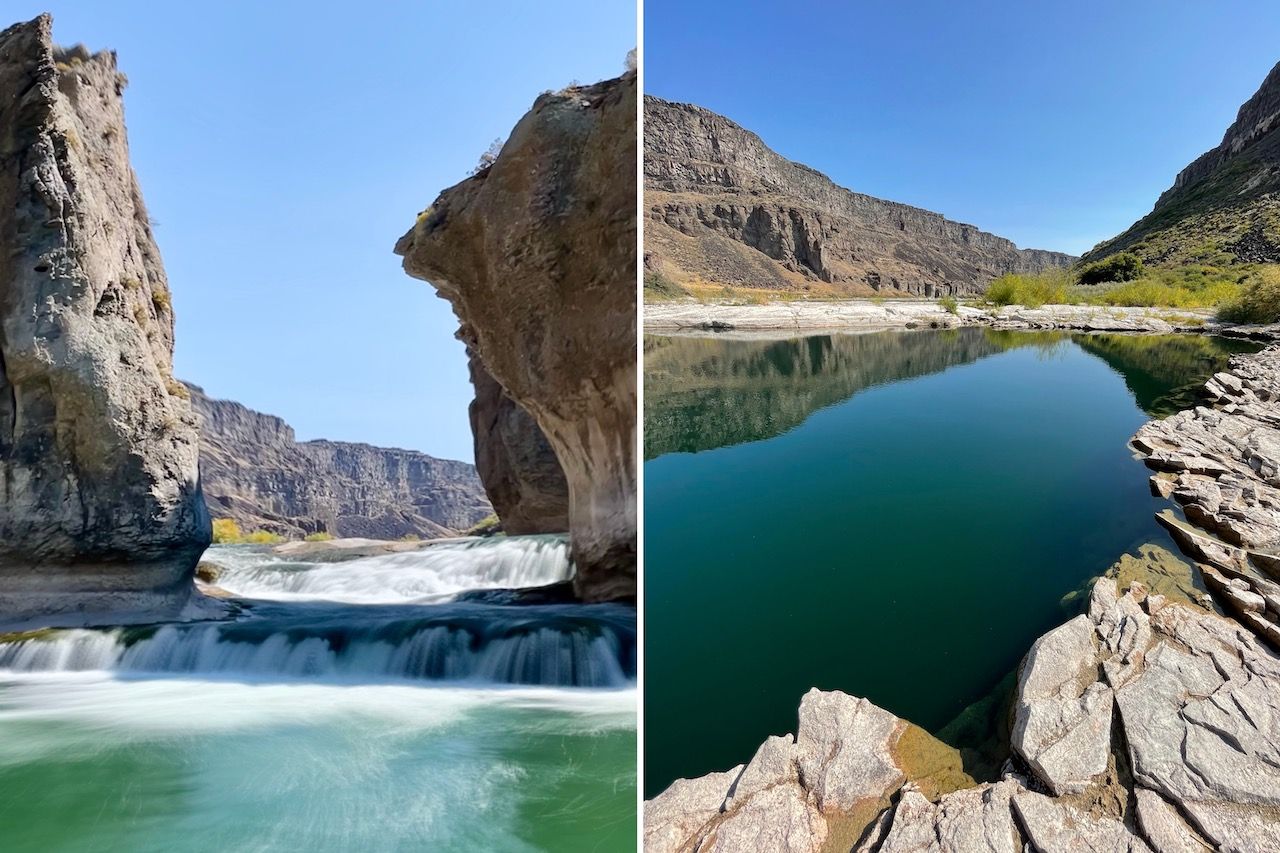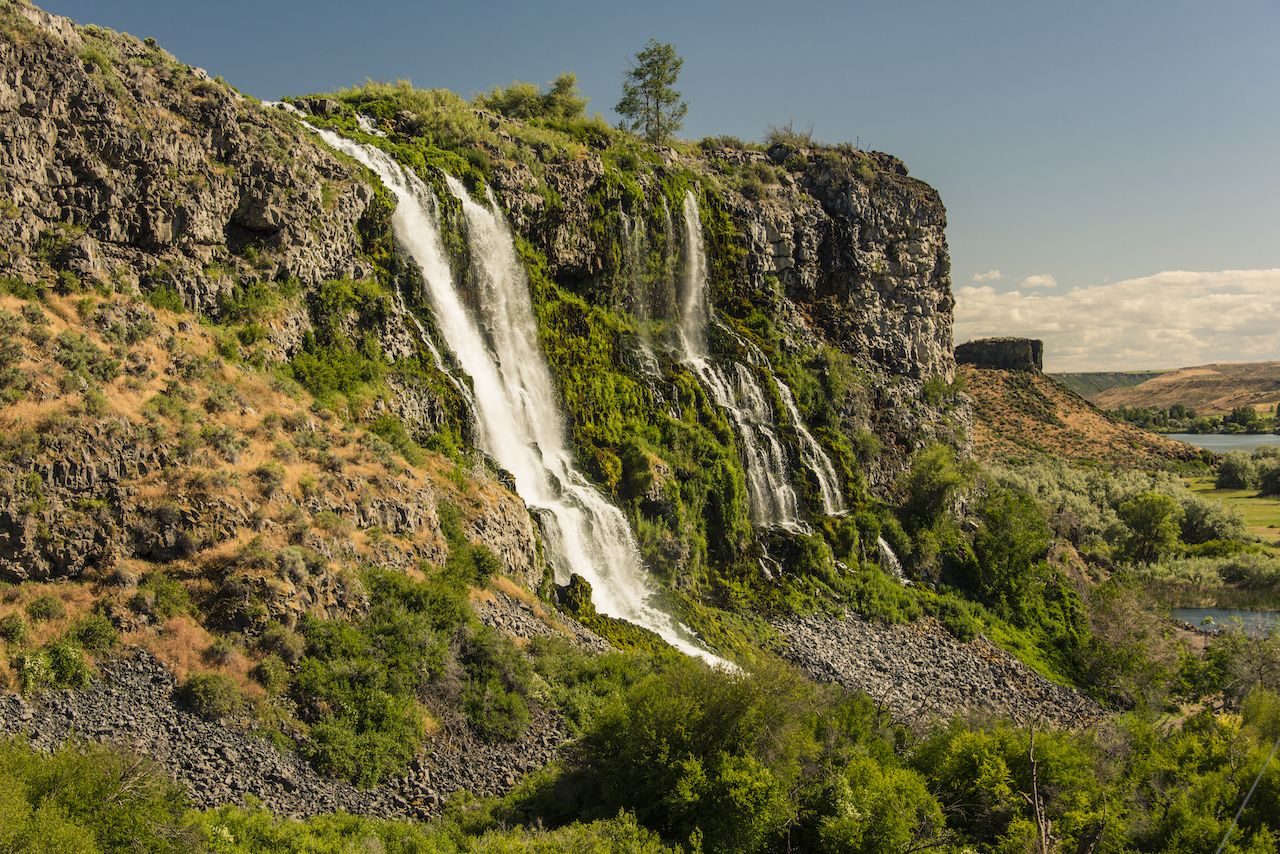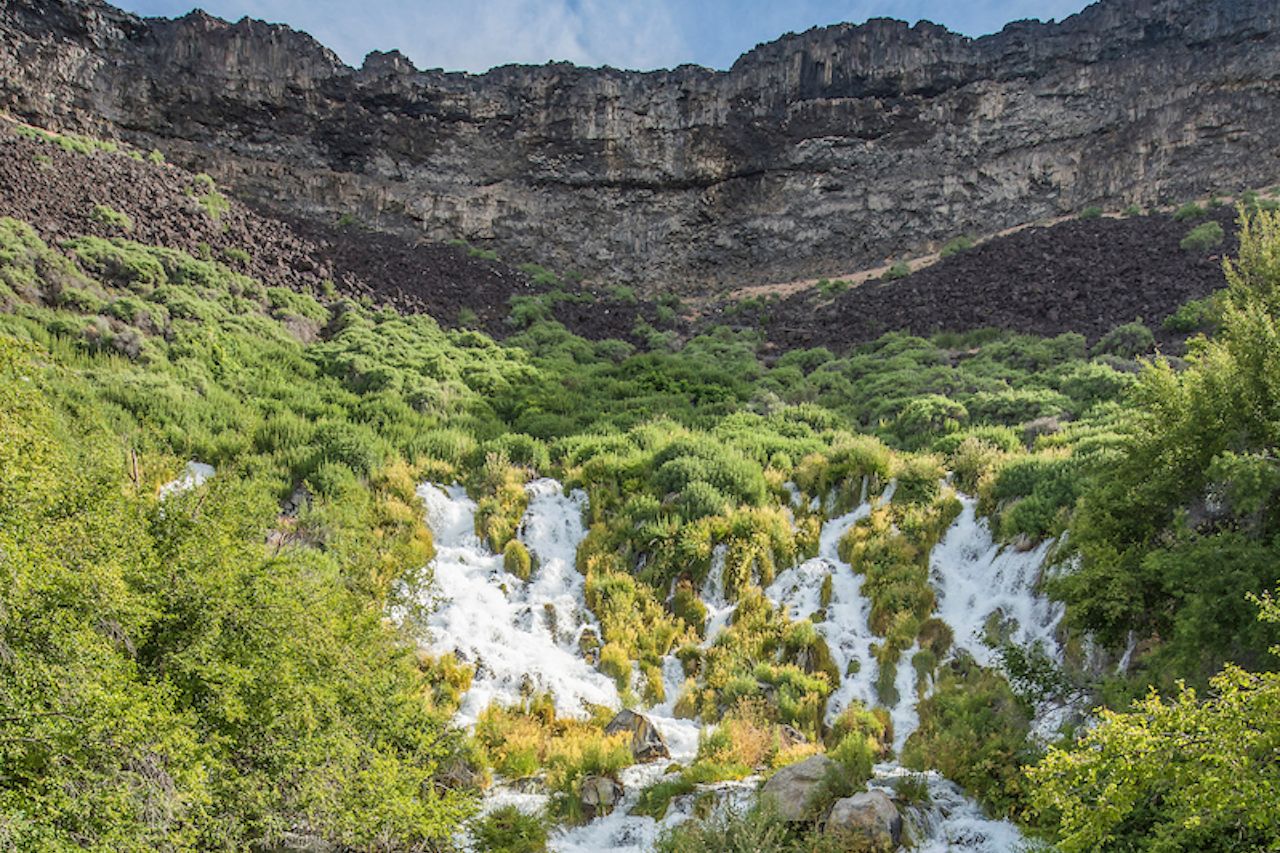“When you hear people talk about the waterfalls in Southern Idaho, they’re almost all going to start with Shoshone Falls,” Paul Melni, the owner of AWOL Adventure Sports in Twin Falls, Idaho, told me as we got into a pontoon on the Snake River.
The reputation is well earned: Known as the “Niagara of the West,” Shoshone Falls is 212 feet high and some 900 feet wide. In peak season, about 900,000 cubic feet of water drop off the rim every minute — about the same amount of water in the Lincoln Memorial Reflecting Pool, or the equivalent of about 10,000 basketballs falling over the edge every second.
